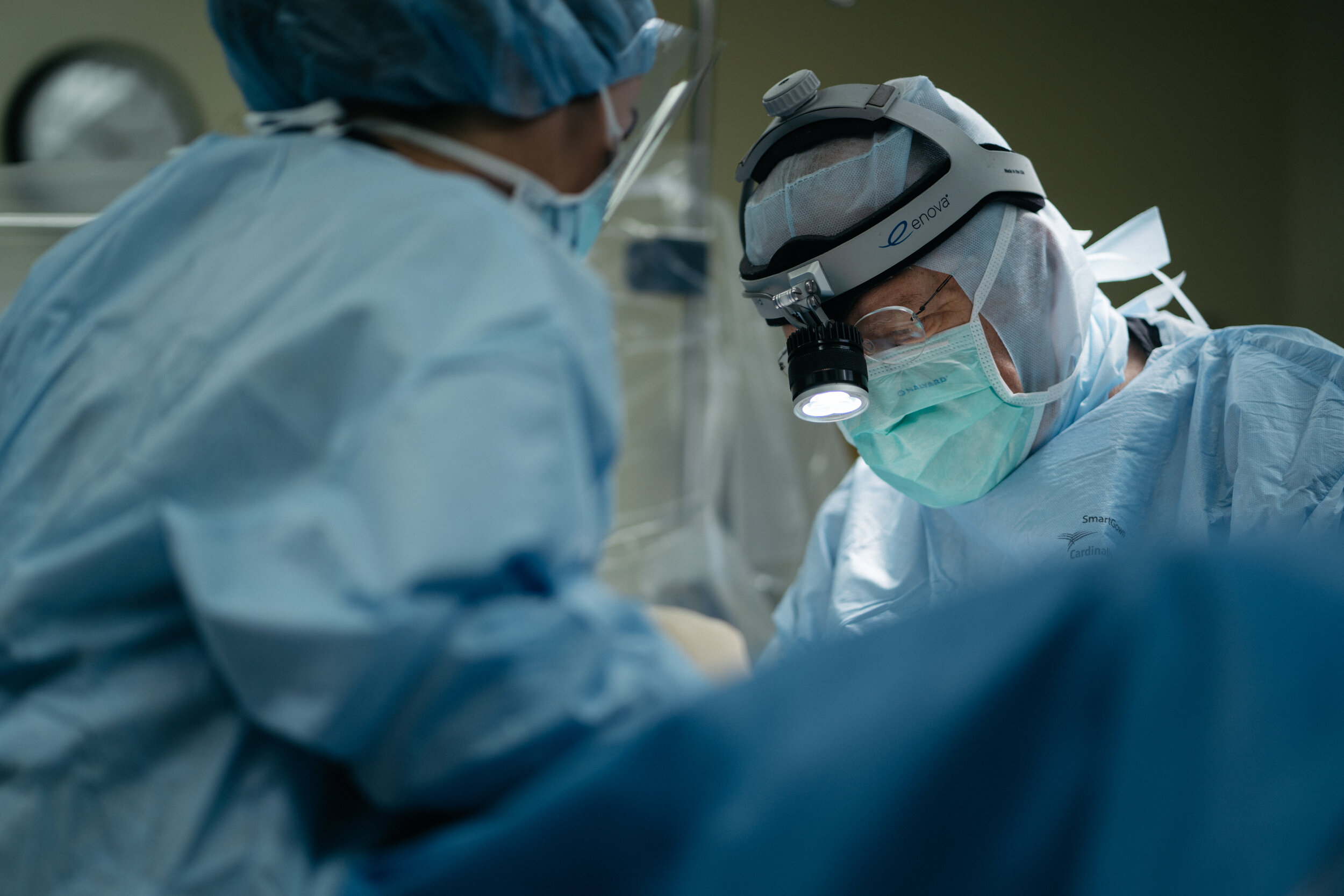
DR. Harris DISCUSSES
total Hip REPLACEMENTS
"A total hip replacement is a replacement of both the ball and the socket”
Dr. Harris discusses total hip replacements
The hip joint is a “ball and socket” joint. The socket area (acetabulum) is inside the pelvis. The ball part of this joint is the top of the thigh bone (femur). It joins with the acetabulum to form the hip joint.
In a healthy hip, the head of the femur fits securely in the acetabulum to form the hip joint.
What is a total hip replacement?
In a total hip replacement, we remove the ball to insert metal and plastic to make up for bone and cartilage loss. These parts are artificial, but serve the same function as our own. There are no nerves in the metal or plastic so the pain associated with the rubbing of ‘bone on bone’ in the joint is relieved.
What patient should consider a total hip replacement?
A patient should seriously consider a replacement when other treatments such as injections, exercises, and braces don't produce results.
When these don't work, and the joint is starting to run your life, that's when you should seriously consider a replacement. You don't wait until the joint has taken over your life.
Dr. Harris recommends considering a hip replacement when a patient is in “good shape”—rather than “waiting until the last minute.” When a patient is in good health, prior to the procedure, the healing time and recovery process are much faster and easier.
It is commonly believed that only patients in their 60s should consider a hip replacement. However, with current materials and modern techniques, a hip replacement should last 20 to 30 years, so the age range for which patients are eligible has expanded.
Total hip replacements, Then & Now
The traditional techniques for hip replacements involved either detaching muscles to get into the joint or sometimes cutting the bone in order to get into the joint. In which case you'd have to repair the bone or repair the muscle. Because of those procedures, the patient is required to protect their weight bearing until the muscles heal, then the patient can start to enjoy the replacement.
Now, with the Direct Anterior Approach the entire surgery is done between the muscles. The process is like peeking through Venetian blinds: you put your hands in between two blinds to look and when you release the blinds these collapse falling back into place. With this method, there’s NO damage and therefore the recovery time is faster.
Recovery & Risks
Hip replacements, on average, tend to allow functional recovery a bit faster than a knee replacement, so patients are back to moving quickly. Our goal is always to get patients out of bed and moving right away.
When we do a Hip Replacement, you’re going to be up and walking the SAME DAY.
The slower portion of the recovery process is learning how to balance. Many patients who have a hip replacement have weakened muscles around the hip joint because the joint suffered trauma for some time. However, the patient is expected to use walking aids to help with balance—walking aids are needed for as little as one to two weeks. Some patients only need the walking aids for as long as four weeks to help get rid of any limps.
The patient will get a lot stronger and will lose their limp in just weeks. Healing can be done in weeks, but in about three months is when we consider the replacement completely healed. In that time, the patient will add new activities back into their everyday routine.
The biggest risk, as with all of the surgeries, is infection. With hip replacements, we also worry about falls and trauma. However, in terms of activity level, the patient is doing so much more than they were before surgery.
The recovery is relatively quick as long as patients can put in the time and effort to work with their therapist to regain their strength.
Dr. Harris Addresses Common Misconception
Common misconceptions mainly center around when. ”When should I have this (replacement) surgery?” People are told, “Well, you're too young. You’re 58. They're 62.’” However, Dr. Harris informs that it's more about how much impairment the patient has because of the joint and what their overall health is.
We advise a patient be in decent health for this surgery. The procedure becomes higher risk when the patient is very sick. If a patient waits until they’re in a wheelchair, it will be harder to reach their desired activity level.
Another misconception is the complications that a patient may have seen or heard about. The patient who has a well functioning hip replacement will disappear into the crowd with no one knowing they had a replacement. On the other hand, the patient with complications will stand out and will tell people about their experience. For that reason, a patient’s choice of surgeon is very important. The patient should look for a surgeon with experience and one who’s experienced with modern techniques so the complication rate is much lower.
Now, any surgery has potential complications and hip replacement surgery has potential for example, for dislocation. [Dr. Harris] I've done more than 2,000 Direct Anterior Approach replacements and my dislocation rate is about point 2%.


